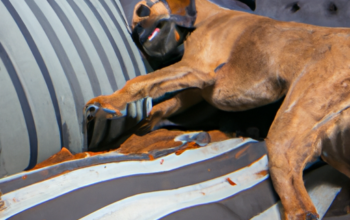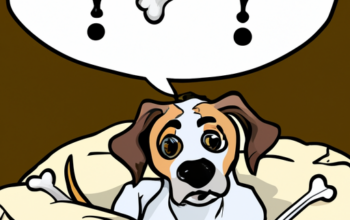Just as Michelangelo took great care in chiseling the magnificent statue of David, so too should you when it comes to trimming your dog’s nails. It’s not just about aesthetics, but also about their comfort and health. Regular nail trims are a critical aspect of grooming that often gets overlooked until it becomes a problem. Having the right tools and knowledge can make this task less daunting for both you and your furry friend.
Understanding where the ‘quick’ is in your dog’s nail is crucial to avoid causing them discomfort or injury during the process. With some tips on calming techniques, even the most nervous pets can learn to tolerate this routine grooming procedure.
In this article, we’ll guide you through each step with detailed instructions and expert advice on how to safely trim your dog’s nails at home.
Understanding the Importance of Regular Nail Trimming
You might not realize it, but regularly trimming your dog’s nails isn’t just about grooming, it’s crucial for their overall health and comfort too! In fact, there are significant health implications if you don’t keep up with this routine.
When a dog’s nails grow too long, they can cause discomfort as they press into the pads of the feet. This can lead to difficulty walking or even painful injuries.
Understanding nail growth patterns in dogs is essential for effective trimming. Nails that aren’t cut regularly may curl back into the paw pads causing pain and infections. Additionally, overgrown nails can affect your dog’s posture and joint alignment leading to chronic issues.
So remember, regular nail trims aren’t merely cosmetic—they’re a key component of your furry friend’s wellbeing!
Gathering the Necessary Tools
Before diving into the process, it’s crucial to gather all your necessary tools. This includes finding the right nail clippers for your dog’s size and breed. Selecting a good pair of clippers is vital as poorly made ones can lead to painful nail splits or cracks. Seek out a sturdy, sharp pair that fits comfortably in your hand for secure handling.
Tool maintenance also plays a significant role – ensure your selected clippers are clean and sharp to make cutting easier and safer. Using dull or dirty tools can cause discomfort or even infection in your pet. You may also consider purchasing styptic powder, which quickly stops bleeding if you accidentally clip too deep.
Remember, preparation is key when it comes to making this routine task stress-free and efficient for both you and your furry friend.
Identifying the Quick in Your Dog’s Nails
Identifying the quick in your pup’s claws can feel like looking for a needle in a haystack – it’s no mean feat! Yet, understanding this essential part of your dog’s nail anatomy is key to avoiding painful injuries and ensuring safe trimming.
Quick visibility varies in different breeds, due to their distinctive nail colors:
-
In light-colored nails, the quick appears as a pinkish section visible through the nail.
-
Dark or black nails make identification challenging; you’ll need to look for a solid, non-transparent area.
-
Breeds with mixed color nails require careful attention.
Preventing quick injuries during clipping involves gradual trimming and close observation. Remember: cutting into the quick not only hurts your dog but also leads to bleeding. So take time and be meticulous with each clip.
Technique for Trimming Safely
Let’s dive right into mastering the perfect technique for a safe and comfortable trimming session with your furry friend. Nail clipping frequency is essential to consider. Too often can cause discomfort, but waiting too long may lead to overgrown nails which can affect their walking.
Start by holding your dog’s paw firmly but gently. Cut at a 45-degree angle, with the cutting end of the nail clipper towards the end of the nail. You’re aiming just to cut off the tip, avoiding hitting the quick. If you accidentally cut into this area, apply styptic powder immediately to stop bleeding.
As for safety precautions, never rush through this process. It’s easy to make mistakes when hurriedly trimming nails. Ensure you’re in a well-lit environment and have all necessary tools within reach before starting.
Tips for Soothing Your Pet During the Process
Ensuring your pet’s comfort during a trimming session can truly make all the difference. Imagine you’re Charlie, a Golden Retriever who gets jittery at the sight of clippers – wouldn’t it be wonderful if your loving owner found ways to keep you calm and relaxed? Here are tips for soothing your pet during this process:
-
Practice Touching: Before introducing the nail clippers, get your dog used to having its paws handled. This would help reduce anxiety. Start with gentle massages, progressively touch each toe, and end with a full paw squeeze.
-
Pet Massages: A quick massage before starting can soothe nerves. Focus on areas like the ears and belly where dogs enjoy being rubbed.
-
Positive Reinforcement: Reward calm behavior with treats or praise. This encourages patience and reduces anxiety during future trims.
Frequently Asked Questions
What should I do if I accidentally cut into the quick and it starts bleeding?
If you inadvertently cut into the quick, causing bleeding, don’t panic. Quick identification can prevent future mishaps. Apply a styptic powder or pencil to stop the bleeding and consult your vet promptly for further guidance.
How often should I trim my dog’s nails if they are indoor pets compared to outdoor pets?
“An ounce of prevention is worth a pound of cure. Indoor dogs require nail trimming every 3-4 weeks due to less wear, while outdoor ones may need it less frequently. Nail Length Impact and Trimming Tools Comparison are crucial.”
Are there any specific breeds that require special nail care or trimming techniques?
While most dogs have similar nail shapes, some breed-specific variations exist. For instance, Dachshunds often have curved nails requiring careful trimming. Always use appropriate nail trimming tools to ensure a safe and effective process.
What should I do if my dog is extremely anxious or aggressive during nail trimming?
If your dog shows extreme anxiety or aggression during nail trimming, incorporate anxiety reduction techniques. Use behavioral training methods to familiarize them with the process gradually. Always prioritize comfort and safety over quick results.
Can my dog develop any health problems if I neglect regular nail trimming and if so, what are they?
Yes, neglecting regular nail trims can lead to health issues in dogs. Pain indicators include paw licking or chewing. Unusual limping may occur because long nails cause discomfort and can deform your dog’s foot structure.
Conclusion
In conclusion, trimming your dog’s nails isn’t just about aesthetics; it’s crucial for their health and comfort.
If you’re like my friend Jane, who once let her pup’s nails get too long, causing discomfort and difficulty in walking, you understand the importance of regular trims.
With the right tools and techniques, not forgetting a calm demeanor, your pet can enjoy this necessary grooming routine without fear or stress.
Happy trimming!



